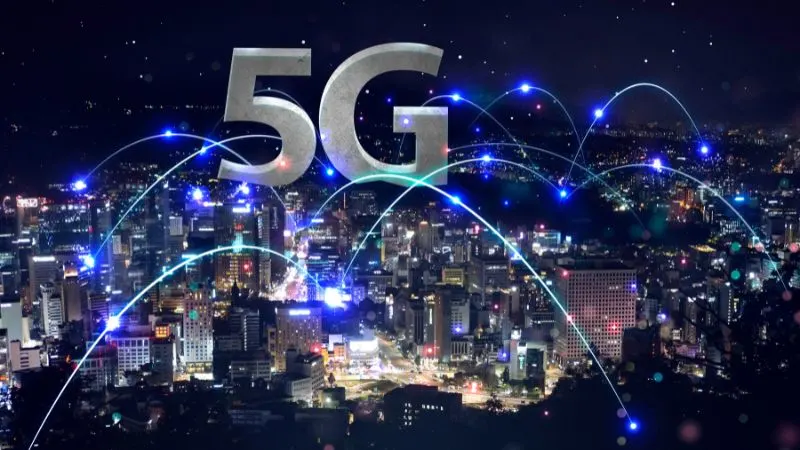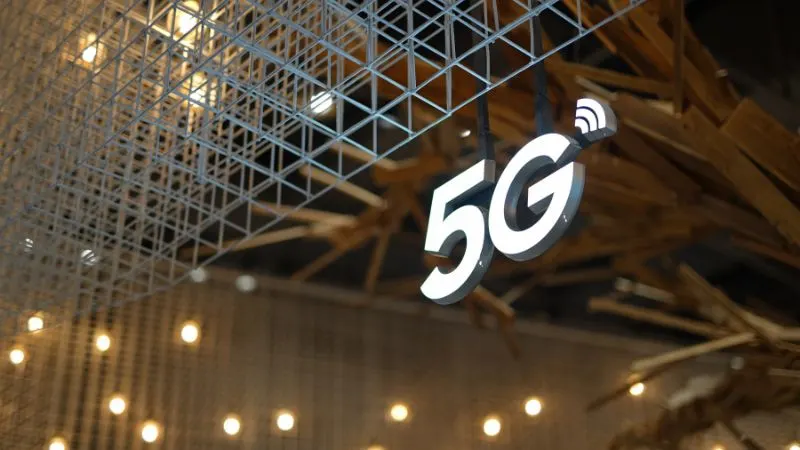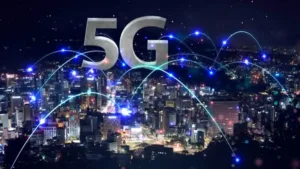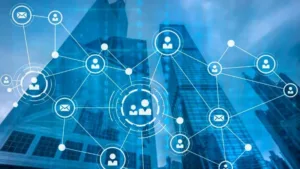
5G is the fifth generation of cellular networks. It offers faster download speeds and improved data networks, making high-speed internet more accessible. This technology could transform mobile experiences with significant advancements in connectivity and efficiency.
5G builds upon the foundation set by 4G but expands the capabilities of wireless connectivity. While 4G focuses on improving speed and connectivity, 5G goes further with enhanced reliability and efficiency in data transmission.
Key Features of 5G
Faster speeds, lower latency, and higher capacity are central to this technology. 5G networks can achieve speeds up to 100 times faster than 4G. This means downloading huge files in seconds and streaming 4K videos without buffering.
5G technology also promises ultra-reliable latency communication. This is critical for real-time applications like online gaming and remote surgeries. The increased capacity allows more devices to connect to data networks without overload.
5G and Connectivity
Global Connectivity and Internet Access
5G technology expands global connectivity by reaching remote and underserved areas. If you live in a rural area, this means better internet access and the possibility to engage in activities like online education or remote work.
Countries with limited infrastructure benefit, as 5G deployments require less time and resources compared to traditional networks. By leapfrogging traditional broadband, more people gain access to online resources, enhancing their quality of life and opening up opportunities.
Reducing Latency for Faster Communication
With 5G networks, one of the most exciting features is ultra-low latency. This means when you send or receive information, it happens almost instantly. This is particularly important for tasks that need real-time data, such as online gaming or video conferencing.
For businesses, this low latency facilitates smooth operations of complex systems, like those used in finance or healthcare, where real-time processing is crucial. You will notice faster uploads and downloads, making everyday internet usage more efficient.
Additionally, 5G’s low latency is essential for emerging technologies like self-driving cars and smart cities, where immediate data processing can significantly enhance safety and functionality. This opens up a future where technology integrates with daily life more naturally and effectively.
5G in Healthcare

Revolutionizing Telemedicine
With 5G, you can experience quicker consultations thanks to the low latency offered by this technology. The real-time interaction between you and your healthcare provider becomes seamless.
You no longer have to wait for video calls to buffer or glitch. 5G provides faster, more reliable connections, which is crucial for diagnosis and treatment. This means that managing your health from home is more practical than ever.
Doctors can monitor patients remotely with connected devices, providing immediate feedback and interventions. You can benefit from continuous care between doctor visits, reducing unnecessary travel to medical facilities.
Enabling Remote Surgery
5G also opens the door to groundbreaking remote surgeries. Surgeons can perform operations from miles away thanks to the low latency and high-speed data transmission.
This lets you receive expertise from top specialists without needing to travel. For patients in rural or remote areas, this is particularly beneficial, offering access to critical surgical care that might not be available locally.
Advanced tools like robotic arms can be precisely controlled over a 5G network. This ensures that you receive high-quality care even when your surgeon isn’t physically present. The technology is making complex surgeries safer and more available, bridging the gap between patients and expert surgeons globally.
Augmenting Reality and Virtual Experience

Enhanced Entertainment with VR and AR
In the entertainment world, 5G makes both AR and VR more enjoyable. With faster speeds and low latency, you can experience seamless gaming, interactive movies, and live events.
For example, in gaming, 5G allows for real-time multiplayer experiences. Imagine playing a game where the digital world blends with your surroundings through AR. This creates a dynamic experience, transforming ordinary playtime.
Movies and concerts change, too. Virtual reality can put you right in the center of the action. Whether it’s a virtual concert or an interactive film, you get a front-row seat from anywhere.
Educational Advancements Through AR and VR
Education sees major improvements with AR and VR on 5G networks. Learning becomes more interactive and practical. Imagine walking through a virtual museum or conducting science experiments in a safe digital lab.
AR can overlay digital information onto real-world environments. It helps students understand complex concepts by visualizing them in 3D right in their classroom or home.
In career training, VR can simulate real-world scenarios. Whether practicing surgery or exploring geographic landscapes, learners gain valuable experiences without leaving their rooms. 5G makes these applications smoother and more accessible.
With these technologies, understanding difficult subjects becomes easier and more engaging.
Smart Cities and Transportation
Intelligent Traffic Management Systems
5G networks provide the high-speed connectivity needed for advanced traffic management. Imagine using sensors and cameras to monitor road conditions in real time. You benefit from faster updates on traffic jams and accidents.
Traffic lights adapt quickly, reducing wait times and congestion. Emergency vehicles get priority lanes, making response times faster. Data collected helps in planning better road layouts.
You’re likely to see less congestion and improved air quality as traffic becomes more efficient. 5G supports these smart systems by offering reliable connections for various devices.
Self-Driving Cars and Public Transport
Self-driving cars are more than a futuristic dream. With 5G, these vehicles can communicate with each other and the infrastructure around them. You can enjoy safer travels as cars detect obstacles and adjust routes instantly.
Public transport also sees improvements. Buses and trains use real-time data to keep schedules accurate. Your travel becomes smoother when delays are minimized.
Autonomous vehicles reduce accidents caused by human error. With 5G’s support, these cars navigate busy streets efficiently. Safety features are enhanced, offering peace of mind on your journey.
Industrial Automation and Efficiency
5G technology is revolutionizing industrial automation by boosting efficiency and enabling smarter factories. It facilitates real-time data sharing and enhances predictive maintenance capabilities, significantly transforming how industries operate.
Factories of the Future
Imagine a factory where machines and systems communicate seamlessly, making decisions on their own. With 5G, this vision becomes a reality. The high-speed connectivity allows for rapid data transfer, so your factory can operate with impressive precision.
In these future factories, robotics, sensors, and artificial intelligence are interconnected, responding to real-time demands. This efficiency reduces downtime and increases productivity. You get systems that quickly adapt to changes, meeting production goals faster while minimizing waste.
With this technology, factories become smarter environments, making things more efficient, lessening errors, and cutting costs. You can monitor processes easily, all through a connected network that’s reliable and fast, helping you stay ahead in a competitive market.
Predictive Maintenance with AI and Drones
5G enables the use of AI and drones for predictive maintenance, which helps you avoid unexpected equipment failures. High-speed data transfer means AI systems can analyze the health of machinery in real time.
Drones equipped with sensors can inspect hard-to-reach areas, gathering crucial data quickly. They communicate this data instantly to central systems, where AI predicts maintenance needs before problems occur.
Frequently Asked Questions
In what ways could 5G technology improve global connectivity and communication?
5G can help connect more devices worldwide, making communication faster and smoother. You’re likely to see better network coverage, even in remote areas. This means staying in touch with family and friends across the globe will become easier and more reliable.
What are the primary advantages and disadvantages of adopting 5G networks?
5G offers faster speeds and improved connectivity. These advancements can support new technologies and make your internet experience much better. On the downside, setting up 5G requires lots of new infrastructure, which can be costly and time-consuming.
How might 5G technology influence the development of smart cities and IoT devices?
With 5G, smart cities can use data to improve things like energy efficiency and transportation. You’ll see enhanced IoT devices that can communicate and function more effectively. This could provide you with smarter home appliances and more efficient city services.
What solutions does 5G offer to current network problems and limitations?
5G can fix issues like network congestion by allowing more devices to connect without slowdowns. You’ll likely notice more reliable service during peak times or large events. The network’s ability to handle more data will also improve your overall internet experience.
How could 5G impact industries and job opportunities in the future?
Industries like healthcare, manufacturing, and entertainment could see growth through innovations driven by 5G. This may create new job opportunities in technology and related fields. You might find careers evolving as companies adopt 5G and need workers with specialized skills.



